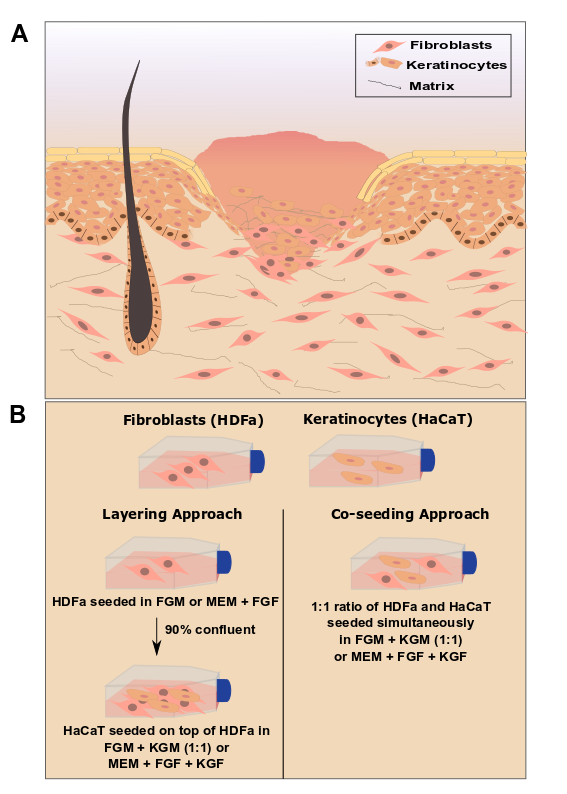Preprints by preLighters – Snehal Kadam
20 May 2020
Snehal Kadam is a research assistant in Karishma Kaushik’s lab and is studying bacterial pathogens and host-pathogen interactions. She has highlighted a number of preprints in this field, and is now first author on the new study:
To Serum or Not to Serum: Reduced-serum based methods for contact-based co-culture of human dermal fibroblasts (HDFa) and epidermal keratinocytes (HaCaT) for wound bed studies
Snehal Kadam, Madhusoodhanan Vandana, Karishma Kaushik
https://www.researchsquare.com/article/rs-21191/v1
We caught up with Snehal to hear more about her recent work.

Could you give a bit of background to your field?
The wound bed is a complex cellular microenvironment in which cell types such as fibroblasts and keratinocytes exist in close proximity and communicate with each other. During the proliferative phase of wound repair, fibroblasts migrate into the wound bed and secrete various factors that signal the migration of neighbouring keratinocytes. This results in pockets within the wound bed where both the cell types come in direct contact with each other, and these interactions play an important role in wound healing.
What were the main challenges you set out to solve in the study?
While fibroblasts and keratinocytes co-exist in close contact in the wound bed, replicating the co-culture of both cell types in vitro has proven to be difficult. The serum requirements for attachment and proliferation of both cell lines are notably different, with dermal fibroblasts requiring high serum concentrations (5-10% fetal bovine serum) and epidermal keratinocytes usually requiring low concentrations or complete absence of serum. This makes it difficult to co-culture these two cell types in direct contact with each other. Previous approaches have used complex protocols involving sequential media with different serum concentrations, individually added growth factors, cell-feeder systems with irradiation, or porous membranes separating the two cell types; all these processes are resource, time, and labour-intensive.
How does your work tackle these challenges?
We developed approaches to establish direct contact-based co-culture of fibroblasts (HDFa) and keratinocytes (HaCaT) under conditions that are simple, easy to adopt and use, and employ reduced-serum conditions. In these media formulations, cells were co-cultured using two approaches – layering, in which, keratinocytes are layered on top of confluent fibroblasts, and co-seeding, where both cell types are seeded simultaneously. Our reduced-serum formulations supported both co-culture approaches, showing robust attachment, proliferation and morphology of both cell types over several days. The co-cultured cells under reduced-serum conditions also demonstrated migration and wound closure.
The reduced-serum formulations employ widely-available and accessible components, and include cell-specific growth factors. They also represent a significant advance towards developing human-relevant cell culture approaches, by reducing the scientific, ethical and technical limitations associated with the usage of animal serum.

Why did you choose to post your preprint on Research Square?
Research Square is a relatively new preprint platform. We chose to post here since the journal we submitted to, BMC Molecular and Cell Biology, allows for direct preprint posting during submission. The InReview service of Research Square makes this an easy process. An interesting feature, one that I’ve not seen in other platforms, is that InReview allows authors and readers to see the peer review timeline at the journal.










